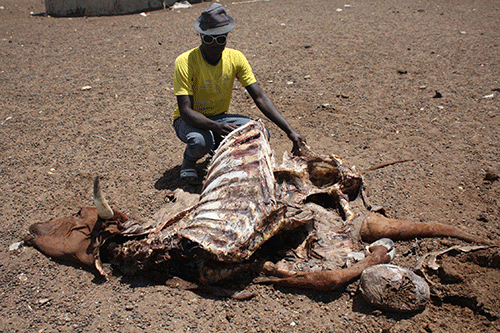Given the below-average rainfall since the beginning of this year’s rainy season, the country faces a substantial risk of low water supply and poor grazing
conditions. This represents a major risk to the agriculture sector, rangeland recovery and livestock production.
This concern was shared by the Agricultural Bank of Namibia (Agribank) in its February 2023 market watch report. The bank noted that delayed planting in areas where crop production is largely under rainfed and dry conditions are major concerns, negatively impacting crop yields and threatening food security.
“Farmers are advised to strengthen efforts in building climate resilience for farming activities to reduce income losses from a potential drought. Farmers and
potential off-takers are encouraged to start preparing for post-harvest care and marketing of crops to realise maximum benefit from the 2023 harvest,” advised
Agribank.
Agriculture is one of Namibia’s most important sectors, with the majority of Namibia’s population depending directly or indirectly on the agricultural sector for their livelihoods.
Agriculture’s contribution to the country’s gross domestic product (GDP) (excluding fishing) over the last five years has been just over 4%.
The bank noted the seasonal climate outlook for 2022-23 indicated normal to above-normal rainfall for most parts of the country, giving hope to farmers and the agriculture sector at large.
The rainfall season in Namibia usually ranges from October to April. The onset of rainfall was delayed as rainfall started in December 2022, with heavy rains received in January 2023 across most parts of the country.
The Kunene, Omusati, Oshana, Ohangwena, Oshikoto Kavango West and East and Zambezi regions received above-normal rainfall while most parts of //Kharas, Hardap, Erongo, western Kunene and eastern Omaheke regions received below average rainfall in January 2023, it stated.
Poor rainfall performance in February 2023 was recorded in most parts of the country with few exceptions. Low to no rainfall was observed over Kunene, Omusati, Oshana, Ohangwena, Oshikoto, Khomas, Omaheke, Erongo, Hardap and //Kharas regions.
“Cumulative rains between the period October 2022 to February 2023 indicate below-normal rainfall across most parts of the country. This is mainly due to long, dry spells experienced, reflecting a departure from a seasonal outlook.
This suggests that normal to above normal rainfall projections may not hold for the remainder of the rainy season (March to April 2023),” reads the report.
The bank stated that considering harsh climatic conditions, coupled with the global crisis, farmers are expected to introduce innovative ways of coping with drought to avoid further losses.
Government support is required in terms of proactive risk transfer instruments, market access and a much-needed drought relief programme.


